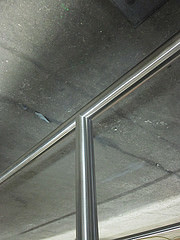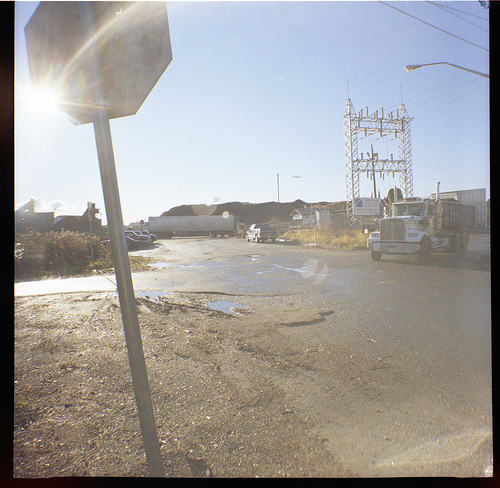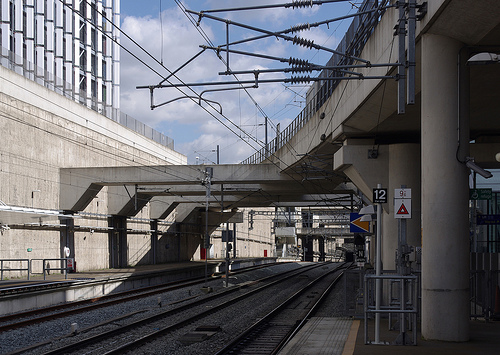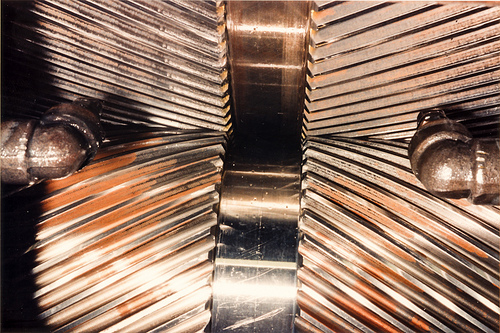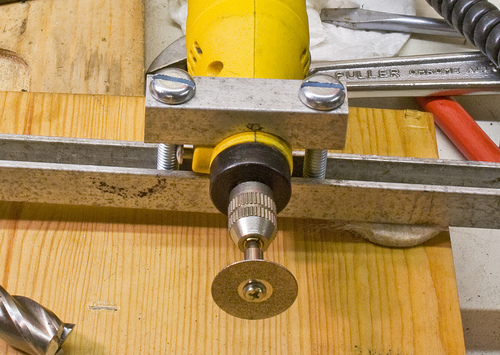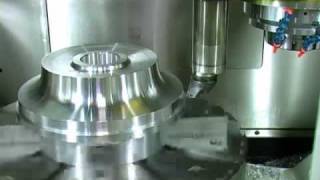Steven F. Udvar-Hazy Center: British Hawker Hurricane, with P-38 Lightning and B-29 Enola Gay behind it
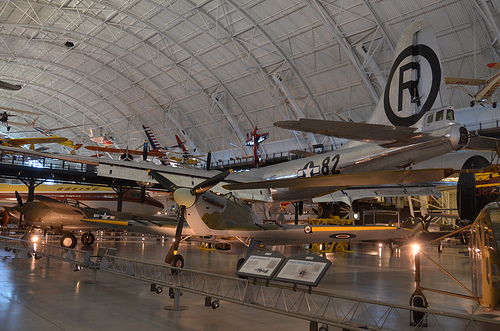
Image by Chris Devers
Quoting Smithsonian National Air and Space Museum | Hawker Hurricane Mk. IIC:
Hawker Chief Designer Sydney Camm’s Hurricane ranks with the most important aircraft designs in military aviation history. Designed in the late 1930s, when monoplanes were considered unstable and too radical to be successful, the Hurricane was the first British monoplane fighter and the first British fighter to exceed 483 kilometers (300 miles) per hour in level flight. Hurricane pilots fought the Luftwaffe and helped win the Battle of Britain in the summer of 1940.
This Mark IIC was built at the Langley factory, near what is now Heathrow Airport, early in 1944. It served as a training aircraft during the World War II in the Royal Air Force’s 41 OTU.
Donated by the Royal Air Force Museum
Manufacturer:
Hawker Aircraft Ltd.
Date:
1944
Country of Origin:
United Kingdom
Dimensions:
Wingspan: 12.2 m (40 ft)
Length: 9.8 m (32 ft 3 in)
Height: 4 m (13 ft)
Weight, empty: 2,624 kg (5,785 lb)
Weight, gross: 3,951 kg (8,710 lb)
Top speed:538 km/h (334 mph)
Engine:Rolls-Royce Merlin XX, liquid-cooled in-line V, 1,300 hp
Armament:four 20 mm Hispano cannons
Ordnance:two 250-lb or two 500-lb bombs or eight 3-in rockets
Materials:
Fuselage: Steel tube with aircraft spruce forms and fabric, aluminum cowling
Wings: Stressed Skin Aluminum
Horizontal Stablizer: Stress Skin aluminum
Rudder: fabric covered aluminum
Control Surfaces: fabric covered aluminum
Physical Description:
Hawker Hurricane Mk. IIC single seat, low wing monoplane ground attack fighter; enclosed cockpit; steel tube fuselage with aircraft spruce forms and fabric, aluminum cowling, stressed skin aluminum wings and horizontal stablizer, fabric covered aluminum rudder and control surfaces; grey green camoflage top surface paint scheme with dove grey underside; red and blue national roundel on upper wing surface and red, white, and blue roundel lower wing surface; red, white, blue, and yellow roundel fuselage sides; red, white and blue tail flash; Rolls-Royce Merlin XX, liquid cooled V-12, 1,280 horsepower engine; Armament, 4: 20mm Hispano cannons.
• • • • •
Quoting Smithsonian National Air and Space Museum | Boeing B-29 Superfortress "Enola Gay":
Boeing’s B-29 Superfortress was the most sophisticated propeller-driven bomber of World War II and the first bomber to house its crew in pressurized compartments. Although designed to fight in the European theater, the B-29 found its niche on the other side of the globe. In the Pacific, B-29s delivered a variety of aerial weapons: conventional bombs, incendiary bombs, mines, and two nuclear weapons.
On August 6, 1945, this Martin-built B-29-45-MO dropped the first atomic weapon used in combat on Hiroshima, Japan. Three days later, Bockscar (on display at the U.S. Air Force Museum near Dayton, Ohio) dropped a second atomic bomb on Nagasaki, Japan. Enola Gay flew as the advance weather reconnaissance aircraft that day. A third B-29, The Great Artiste, flew as an observation aircraft on both missions.
Transferred from the United States Air Force.
Manufacturer:
Boeing Aircraft Co.
Martin Co., Omaha, Nebr.
Date:
1945
Country of Origin:
United States of America
Dimensions:
Overall: 900 x 3020cm, 32580kg, 4300cm (29ft 6 5/16in. x 99ft 1in., 71825.9lb., 141ft 15/16in.)
Materials:
Polished overall aluminum finish
Physical Description:
Four-engine heavy bomber with semi-monoqoque fuselage and high-aspect ratio wings. Polished aluminum finish overall, standard late-World War II Army Air Forces insignia on wings and aft fuselage and serial number on vertical fin; 509th Composite Group markings painted in black; "Enola Gay" in black, block letters on lower left nose.
• • • • •
Quoting Smithsonian National Air and Space Museum | Lockheed P-38J-10-LO Lightning:
In the P-38 Lockheed engineer Clarence "Kelly" Johnson and his team of designers created one of the most successful twin-engine fighters ever flown by any nation. From 1942 to 1945, U. S. Army Air Forces pilots flew P-38s over Europe, the Mediterranean, and the Pacific, and from the frozen Aleutian Islands to the sun-baked deserts of North Africa. Lightning pilots in the Pacific theater downed more Japanese aircraft than pilots flying any other Allied warplane.
Maj. Richard I. Bong, America’s leading fighter ace, flew this P-38J-10-LO on April 16, 1945, at Wright Field, Ohio, to evaluate an experimental method of interconnecting the movement of the throttle and propeller control levers. However, his right engine exploded in flight before he could conduct the experiment.
Transferred from the United States Air Force.
Manufacturer:
Lockheed Aircraft Company
Date:
1943
Country of Origin:
United States of America
Dimensions:
Overall: 390 x 1170cm, 6345kg, 1580cm (12ft 9 9/16in. x 38ft 4 5/8in., 13988.2lb., 51ft 10 1/16in.)
Materials:
All-metal
Physical Description:
Twin-tail boom and twin-engine fighter; tricycle landing gear.
Insertable Tooling Systems Speed Tool Change-Over
Compatible with any type of lathe, transfer machine or milling center, the tooling systems can be used for applications such as OD or ID grooving, form drilling, thread whirling, single-point threading, China China Turning and milling, broaching of serrations …
Read more on Modern China Machine Shop
2014 – 2015 Aston Martin Rapide S
The improved V-12 engine received CNC-machined combustion chambers and dual variable camshaft timing, knock sensing, and a fully catalyzed stainless steel exhaust system. The model has …. The changes also lead to a tangible improvement in front end …
Read more on Top Speed
BENZ, Inc. Releases New BENZ Solidfix, BENZ CAPTO and Trifix Modular Quick …
BENZ Tools specializes in the development and China manufacturing of innovative tooling systems for China China Turning and milling machines such as live and static tools, angle heads, multi-spindle heads, spindle speeders, large scale drill heads, 5-axis heads, and the …
Read more on Industry Today (press release)
